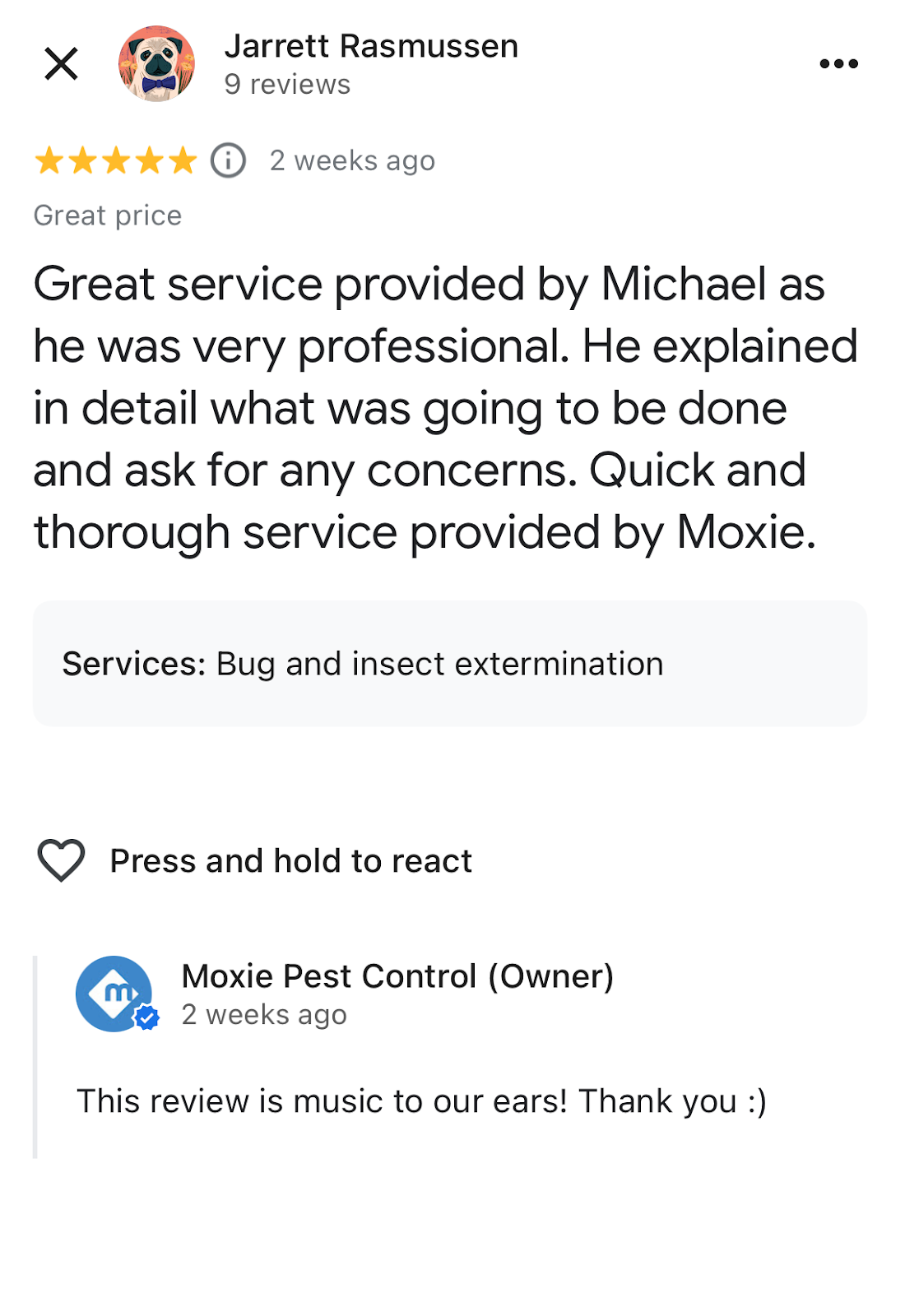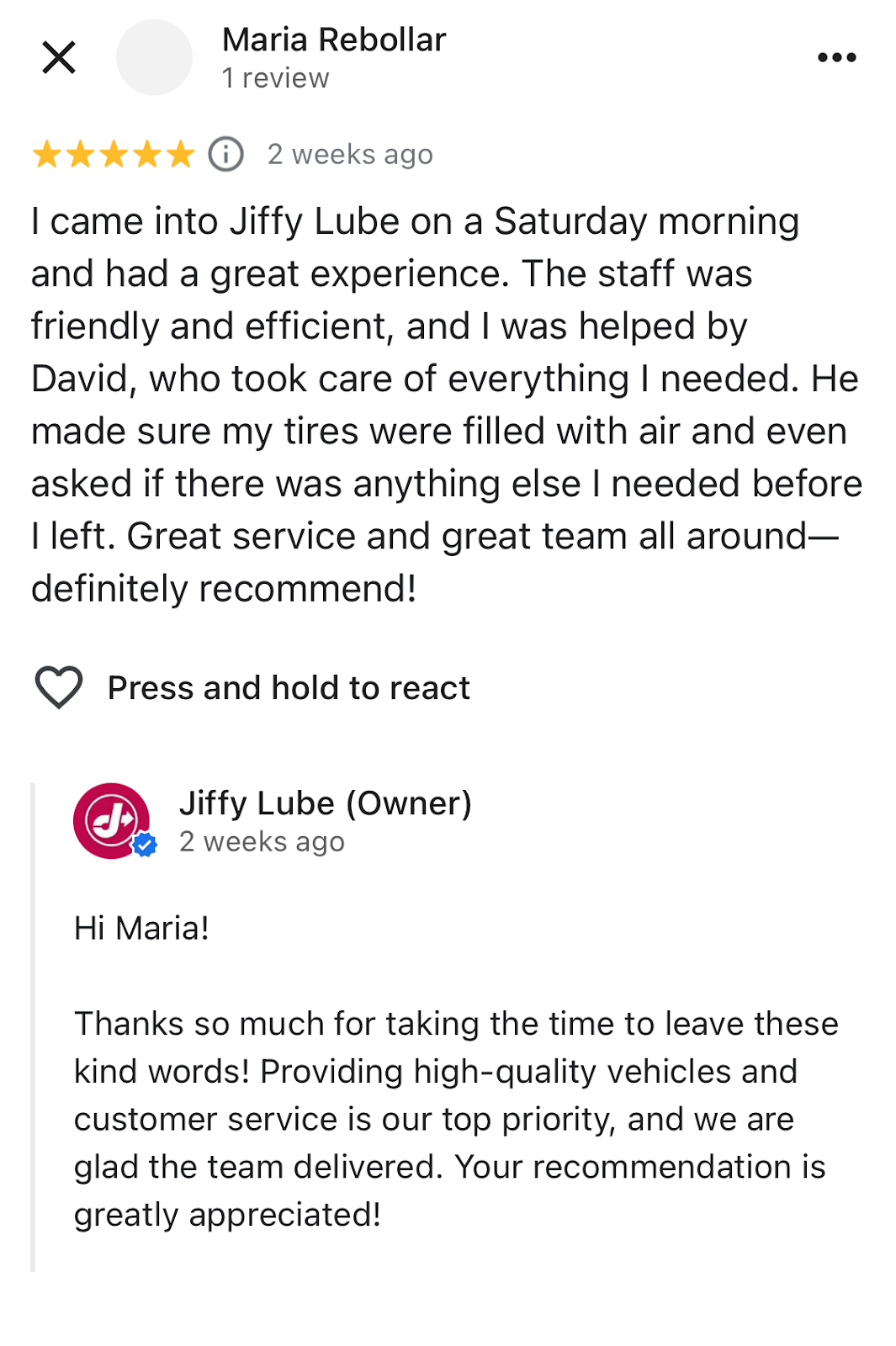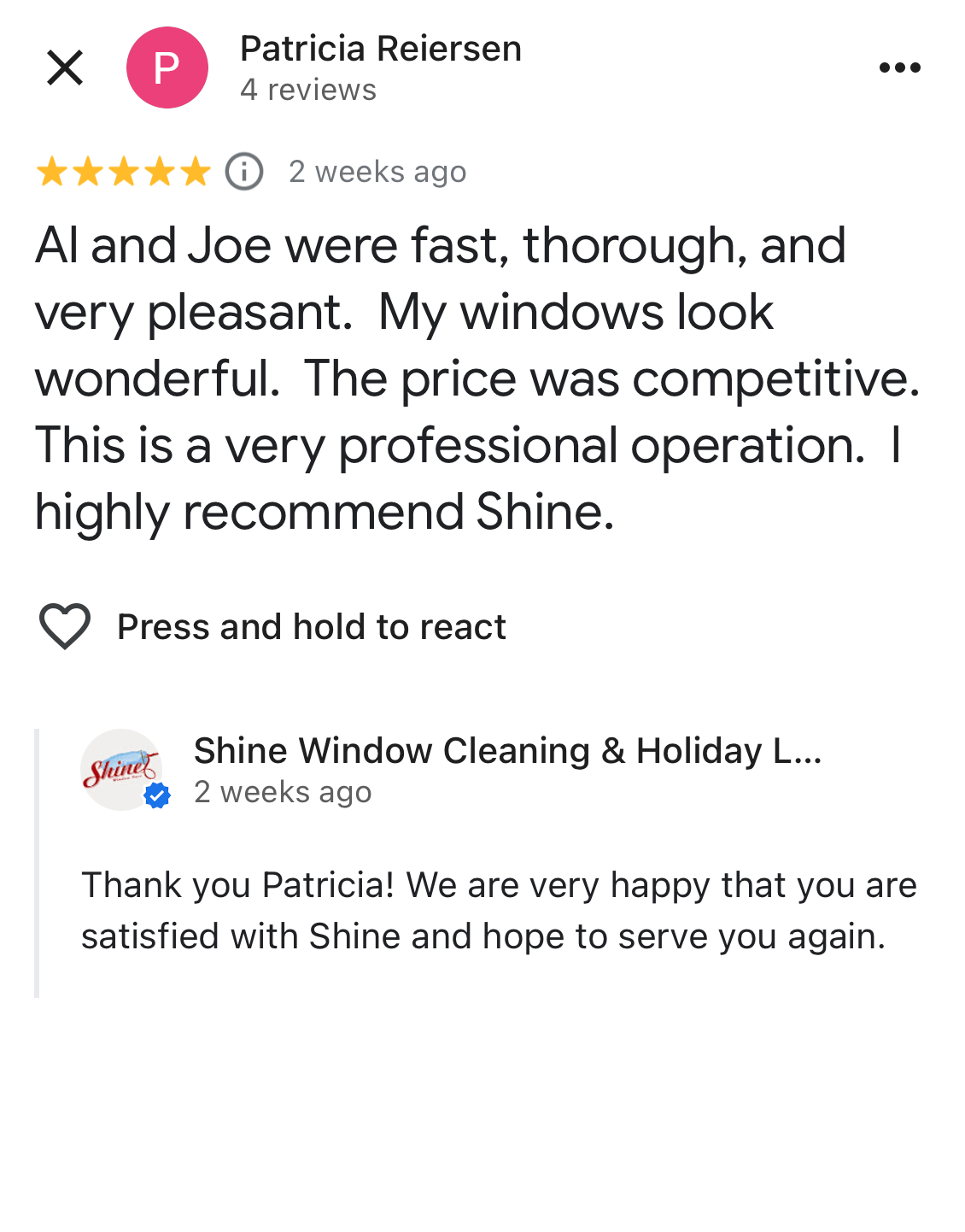
Customer reviews on platforms like Google have become the digital equivalent of word-of-mouth, and they’re more influential than ever. 81% of consumers use Google to evaluate local businesses, and 83% say they feel more loyal to businesses that respond to reviews. These reviews shape your reputation, influence purchasing decisions, and directly impact your local SEO rankings.
But managing Google reviews isn’t always easy. Many businesses struggle with handling a high volume of feedback, crafting professional responses to negative comments, and engaging meaningfully with customers in a way that reflects their brand.
So, let’s explore how to respond to positive, neutral, and negative Google reviews, with real examples and proven strategies to turn feedback into trust. Whether you run a single location, a growing franchise, or a national enterprise, you’ll find practical tips to help you build a standout reputation and convert more searchers into loyal customers.
Think back to a time when you left a review (positive or negative) and the business replied. Did their response make you feel heard, respected, or more likely to return? For many customers, a thoughtful reply signals that a company truly values their input. This emotional connection builds trust, encourages loyalty, and turns one-time buyers into long-term advocates.
But the impact goes beyond warm fuzzies. Responding to reviews, especially on a platform as visible as Google, has tangible business benefits. It strengthens your brand reputation, increases online visibility, and creates a valuable feedback loop to help improve your products or services. In fact, businesses that respond to at least 25% of their reviews earn 35% more revenue on average than those that don’t.
Ignoring reviews, on the other hand, sends a message too, and it’s not a good one. Whether you're thanking a happy customer or professionally addressing a complaint, every response is a chance to show you care, improve public perception, and stand out from competitors who stay silent.
Customer feedback is more than just opinions — it’s a goldmine of insights that can significantly impact the trajectory of a business. Reading and responding to reviews allows businesses to uncover hidden issues, fine-tune offerings, and elevate their overall customer experience. When you engage with feedback, you demonstrate a commitment to continuous improvement, which can increase customer loyalty and attract new patrons.
Word-of-mouth has taken on new dimensions in the age of social media and public review forums. A single positive review can quickly gain visibility, influencing dozens, if not hundreds or thousands of potential customers. Responding to these reviews amplifies their impact and shows prospective clients that you value your customers' opinions. Whether you’re a small business or a global brand, word-of-mouth in the form of online reviews remains one of the most powerful drivers of growth.
Responding to Google reviews isn’t just good customer service, it’s also good for search engine optimization (SEO). Google’s algorithm favors active and engaged businesses, meaning the more you respond to reviews, the more likely your business is to show up in local search results. And what’s the first thing you do when you need a service? You Google it. This increased visibility can help you rank higher, putting your business in front of more customers.
One big mistake business leaders can make is only responding to negative feedback, the positive reviews are just as important to respond to. Responding to happy customers not only expresses appreciation but also amplifies the goodwill that’s been extended. Publicly acknowledging positive feedback demonstrates your commitment to customer satisfaction and can even encourage others to share their own great experiences.
Responding thoughtfully to positive reviews allows you to celebrate these wins while reinforcing your brand’s values and messaging. Each response becomes a chance to build your reputation and inspire ongoing customer loyalty.
When responding to positive reviews, gratitude should be at the forefront. A simple "thank you" can go a long way in showing customers that their support is truly valued. Whether it’s a one-time customer or a regular, graciously acknowledging their feedback strengthens the bond between them and your business, making them feel appreciated and respected.
Generic responses can fall flat, so it’s crucial to personalize your replies to make the customer feel unique and special. Mention specific details from the review or acknowledge their experience in a meaningful way. Personalized responses show that you’re paying attention, creating a connection that feels more authentic.
Every positive review is an opportunity to subtly reinforce your brand’s messaging and values. While expressing gratitude, you can weave in elements of your core mission or service philosophy. For example, if a customer praises your quick service, you can respond by reiterating your commitment to delivering efficient, high-quality customer experiences.
Positive reviews are a perfect chance to gently encourage repeat business. Thank the customer for their patronage and invite them back by mentioning future services, products, or promotions. A little nudge like, "We look forward to welcoming you back!" can encourage return visits and help foster loyalty over time.
A “good” response to a positive review can look different depending on the industry, the company’s voice, and the nature of the review. However, there are universal best practices that every response should follow: express gratitude, personalize the message, reinforce brand values, and encourage customer loyalty. Below, we’ll explore some real-world examples of well-executed responses to positive Google reviews, breaking down what makes them effective.

What makes this response effective:
Gratitude: The response is warm and welcoming, making Jarrett feel valued and seen.
Conversational tone: The response is written using a colloquial tone.
Short and sweet: A short, friendly response that is easy for the customer to digest.
Psst: Moxie Pest Control uses AskNicely’s customer experience management platform to offer the highest level of customer service to their customers. Learn more here.

What makes this response effective:
Personal: JiffyLube responds to the customer using their name, making the customer feel seen and heard as an individual.
Acknowledges customers' time: The response thanks the customer for their time.
Reinforces service standards: Jiffy Lube tells the customer that providing a high-quality experience is their top priority.
Psst: Jiffy Lube used to rely on outdated, manual feedback methods, but with AskNicely, they’ve transformed their customer experience strategy. By collecting real-time insights and automating review requests, they’ve improved service across stores and earned 300+ 4.5-star Google reviews at 80% of locations. Talk about driving loyalty.

What makes this response effective:
Personal: Like JiffyLube, Shine responds to the customer using their first name to make them feel seen and heard.
Alludes to repeat business: Saying “we hope to serve you again soon” alludes to an ongoing relationship, encouraging customers to return and reinforcing loyalty.
Negative reviews can be difficult to read, but they provide invaluable insights into where your business can improve. While it’s natural to feel defensive, responding thoughtfully to criticism shows both the reviewer and potential customers that your business is committed to addressing concerns and ensuring satisfaction. How you handle these reviews reflects your brand’s dedication to customer service, and a professional response can even turn a negative experience into a positive one. Here’s how to approach negative reviews with tact and strategy.
The first step in responding to a negative review is to acknowledge the customer's concerns with a sincere apology. Even if the issue wasn’t directly your fault, expressing empathy can help diffuse tension and demonstrate that you care about their experience. A simple, “We’re sorry to hear you had a disappointing experience,” goes a long way toward calming frustrated customers and setting the stage for resolution.
Timely responses show that your teams value customer feedback and are proactive in addressing issues. The faster you respond, the more likely you are to prevent the situation from escalating and leaving a lasting negative impression. A prompt reply also reassures future customers that you’re attentive and responsive to all types of feedback, not just positive reviews.
When possible, resolve the main concern publicly to show that you're willing to address issues openly and fairly. Offer a solution or explanation within your initial reply so that others can see how you handle conflict. Afterward, follow up with the customer privately to discuss details further or offer more personalized solutions. This combination shows transparency while maintaining a level of privacy for more complex resolutions.
In your response, offer specific solutions or actions that demonstrate your willingness to correct the problem. Whether it’s a refund, a free service, or a commitment to address an internal issue, tangible actions show that you’re serious about making things right. This not only satisfies the unhappy customer but also signals to others that your business is committed to continuous improvement.
Responding to negative reviews can be challenging. It’s hard to hear criticism, and even harder to craft a response that shows empathy, takes responsibility, and offers solutions. However, a well-handled response can turn a frustrated customer into a loyal one. While responses will naturally vary depending on the industry, company values, and the specifics of the review, the examples below follow best practices: showing empathy, acknowledging the issue, and providing a clear path to resolution.
Review:
"I stayed here last week and was extremely disappointed. The room was dirty, and the staff was unhelpful when I tried to raise the issue. I won’t be staying here again."
Response:
"We sincerely apologize for your experience during your stay. Cleanliness and customer service are top priorities for us, and it’s clear we fell short in this instance. We appreciate your feedback and are taking steps to address these issues with our housekeeping and front desk teams. We would love the chance to make it right — please reach out to us directly, and we’ll ensure your next stay is up to our usual standards."
What makes this response effective:
Review:
"I ordered a jacket online and was sent the wrong size. When I contacted customer service, they didn’t help me at all. Very disappointed!"
Response:
"We’re sorry to hear about the issue with your order and the lack of assistance you received from our team. This is not the level of service we strive to provide. We’ve forwarded your feedback to our customer service team and will be retraining on handling these situations better in the future. In the meantime, we’d love to resolve this for you — please send us a direct message, and we’ll make sure you get the correct size as quickly as possible."
What makes this response effective:
Review:
"I had an appointment here last week, and the staff seemed rushed and inattentive. I felt like I wasn’t listened to, and the overall experience was very stressful."
Response:
"We’re truly sorry that your recent visit didn’t meet your expectations. Our team aims to provide attentive and compassionate care, and we’re sorry this wasn’t your experience. We’ve shared your feedback with the staff to ensure we’re addressing these concerns. We would be happy to discuss this further and ensure your next visit is more comfortable. Please reach out to our office manager directly at [phone number]."
What makes this response effective:
Protecting your business from fake or malicious reviews is essential to maintaining trust and credibility online. These false reviews can mislead potential customers and damage your reputation if left unchecked. Knowing how to spot and address them helps preserve the integrity of your Google reviews.
Fake reviews often share recognizable patterns. Watch out for these red flags:
Google actively combats fake reviews. Check out their Review Policies to learn more about how they identify and handle abuse.
If you suspect a review is fake or malicious, here’s how to report it:
This can all be done in your Google Business profile. By proactively reporting fake or malicious reviews, you can help maintain a fair and trustworthy online reputation for your business.
Even with a solid review response strategy, certain missteps can undermine your efforts and harm your brand’s reputation. Being aware of these common pitfalls will help you maintain strong, positive relationships with your customers and get the most from your Google reviews.
By steering clear of these mistakes, your responses will build trust, show genuine care, and turn feedback into opportunities for growth.
Getting more Google reviews starts with a proactive, simple approach that makes it easy for customers to share their experiences. One effective way to do this is by automating your review requests with a tool like AskNicely Review Request. This lets you seamlessly invite customers to leave feedback right after their interaction, increasing the likelihood of timely, authentic reviews.
Customers are more likely to leave a review when the process is quick and convenient. Use automated, personalized messages sent shortly after service to catch them while their experience is fresh.
Send your review requests at the right moment—ideally within 24 hours of the interaction, to maximize response rates.
Guide customers on how to leave a review by including direct links to your Google Business profile, minimizing friction.
Consider offering non-monetary incentives like recognition, thank-you notes, or entry into a giveaway to motivate reviews without violating platform policies.
Track your review volume and response rates regularly. Use insights to tweak your messaging, timing, or channels for continuous improvement.
AskNicely is a comprehensive customer experience platform that empowers businesses to collect, manage, and respond to customer feedback across multiple channels, including Google. Whether you’re a small business or a large corporation, AskNicely provides the tools to streamline your review management process and build stronger customer relationships.
Responding to reviews in real time can be challenging, especially when feedback comes in across various channels. AskNicely’s Respond feature automates prioritization and response, ensuring both positive and negative Google reviews are addressed quickly and efficiently. This keeps you ahead of your feedback, boosting customer engagement and satisfaction. For step-by-step instructions, check out this guide on configuring workflows with Google reviews.
Getting more reviews from happy customers is easier with AskNicely’s Review Request feature. It simplifies the process by automatically engaging satisfied customers and encouraging them to leave Google reviews. By turning happy customers into advocates, you can significantly enhance your online reputation and attract new business. Learn more about reputation management here.
Collecting feedback is only the first step. AskNicely’s Coaching Playbooks transform feedback into actionable insights by identifying trends and areas for improvement. Teams then use these insights to coach frontline staff, enhancing the overall customer experience and increasing positive reviews.
For example, Schweiger Dermatology leverages AskNicely’s CX platform to monitor patient feedback and coach their teams. Since adopting AskNicely, they’ve seen a 3x increase in positive Google reviews a clear sign that timely, thoughtful responses drive business growth.
Take control of your Google reviews today. With AskNicely, you can simplify review management, improve customer engagement, and turn feedback into measurable growth.
Learn more: Free eBook – How to turn feedback into action
Ready to see the difference? Book a demo today to discover how AskNicely can help your business grow through better review management and customer feedback solutions.